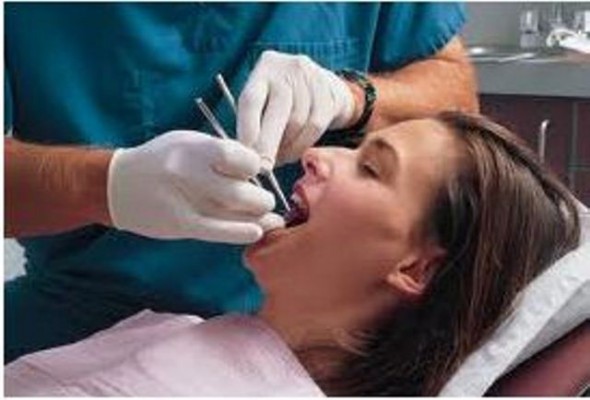Tooth aches are very dreadful. When the pain is left unattended, they can inevitably paralyze all your other activities; this is because it inhibits you from performing one of the most basic activities for the survival of mankind – eating. It is essential to receive proper medical attention and care as soon as you realize the symptoms of tooth ache; this will help you to save your teeth by minimizing the infection and arresting it at the early stages. Oral hygiene is also a reflection of your overall health. Regular dental checkups combined with proper brushing and flossing of teeth will help you maintain the health of your teeth.
Root Canal – Overview
Root canal is an oral procedure performed on the tooth which is severely infected and damaged badly as a result of infection. This treatment helps to repair and restore the tooth by saving the tooth structure, instead of removing it completely. The procedure is named as root canal because dentists will clean the canals within the root of the teeth. Until a few decades back, root canal treatments were considered as one of the most painful dental procedures. However, this is not the case anymore. With the advancements made in the dental technology and in the field of local anesthetics, the process has become an almost painless procedure. It is always best to get your decayed tooth treated in the appropriate manner than to suffer with it on a day-to-day basis. There are also many alternative procedures available for treating the infected teeth such as tooth extraction, placing a bridge and so on. Root canal treatment is one of the most successful, effective and widely suggested procedures because it is a one-time procedure.
Anatomy of the Tooth
To understand how the root canal treatment works, it is essential to have the basic understanding of the tooth structure. Tooth is just like our bones; it is a hollow structure which is made up of several layers. The outermost layer of the tooth is called as the enamel; this is what we see on a day-today basis above our gum lines. Enamel is made up of mineralized substances; they are the hardest parts in our body. The next layer is known as dentin and it are as hard as enamel, but have nerve endings. The pulp of the tooth is found within the dentin. It is made up of vascular tissues, blood vessels, nerve endings, capillaries, cells (lymphocytes, odontoblasts, macrophages and fibroblasts) and connective tissues. The pulp helps the tooth during its early stages of development by supplying the needed nourishment. Once the tooth is mature, the main function of pulp is to transmit pain when it is damaged or infected by any bacteria or microorganisms.
Pulp Infection
Our mouth consists of millions of bacteria and this is found in our saliva, these bacteria helps to digest our food. The most common cause for the pulp infection is due to tooth decay or more precisely when they are left untreated, severe tooth infections affect the pulp of the tooth. The pulp will suffer a slow death when they are infected. The other ways of the developing a pulp infection is when your teeth suffer a major blow, this will disconnect the blood vessel which supplies blood to the teeth, which will eventually lead to the infection of the pulp. Periodontal infection (gum disease which causes swollen and bleeding gums) can cause the bacteria to enter the canal through the small openings on the surface of the root and thereby damaging the pulp. During the early stages of infection the infected tooth will be sensitive to hold and cold beverages, it may also cause pain when you are biting down the teeth. Discoloring of the teeth and swelling of the gums around the teeth are signals for tooth infection. When the pulp gets infected it sends signals in the form of unbearable pain and dental abscess will occur in the areas hugging the jaw bone.
The Treatment
The patient will be given local anesthesia to protect from the pain caused by the treatment. Dentists with experience and skill perform the root canal treatment. After numbing the infected tooth with local anesthesia they will isolate the infected tooth by placing a clamp over to tooth. The dentist will then drill a small hole through your tooth to reach the pulp; the entire pulp of the tooth will be removed with the help of stainless steel files. The dentist will then shape the inside of the tooth and will dry the tooth by using paper cones. The canal will be filled with a material known as Gutta-percha; it is combined with materials such as zinc-oxide to form the filling which is placed inside the tooth. Root canal treatment helps to seal the tooth from further bacterial infections and also removes the existing ones.
About Author: Sara Giblin is a web enthusiast and a passionate blogger who dreams, observes, and listens. She blogs on various topics including home improvement, technology, photography, health and more! At present she blogs for Super Smile- http://supersmile.com.au/, which focus on quality and exceptional orthodontics. They excel in providing incognito braces Canberra, Invisalign, Orthopedics, Plates, Invisible lingual braces and more.

Sylvia Browder is CEO of Specialty Home Services LLC, a Home Improvement Company; a Small Business Consultant at Browder Consulting Group, a startup consultancy firm to help women with startup assistance, marketing, website and graphic design work and other support services. In addition, she has co-authored several published books; publisher of ‘Sylvia Browder’s Blog for Women Entrepreneurs’ a lifestyle blog; and publisher of ShopSpendBlack.com Business Directory & Blog platform created to help consumers find black owned businesses in a searchable format. In her spare time, she enjoys spending time with her husband of 30 years; 5 adult children and 5 grandchildren; church; friends and motorcycle riding.

















